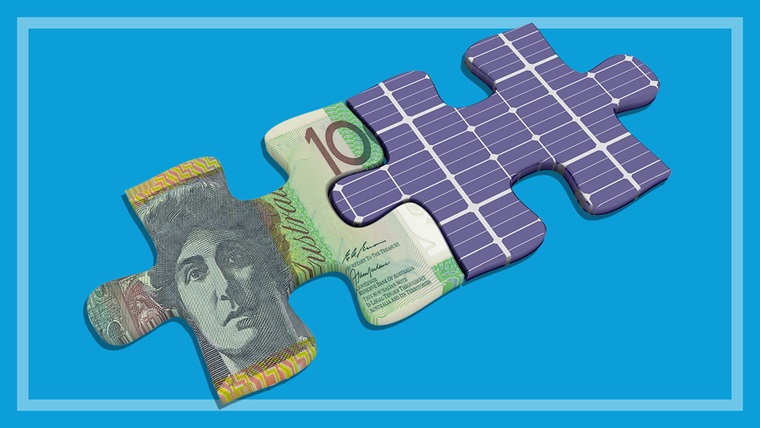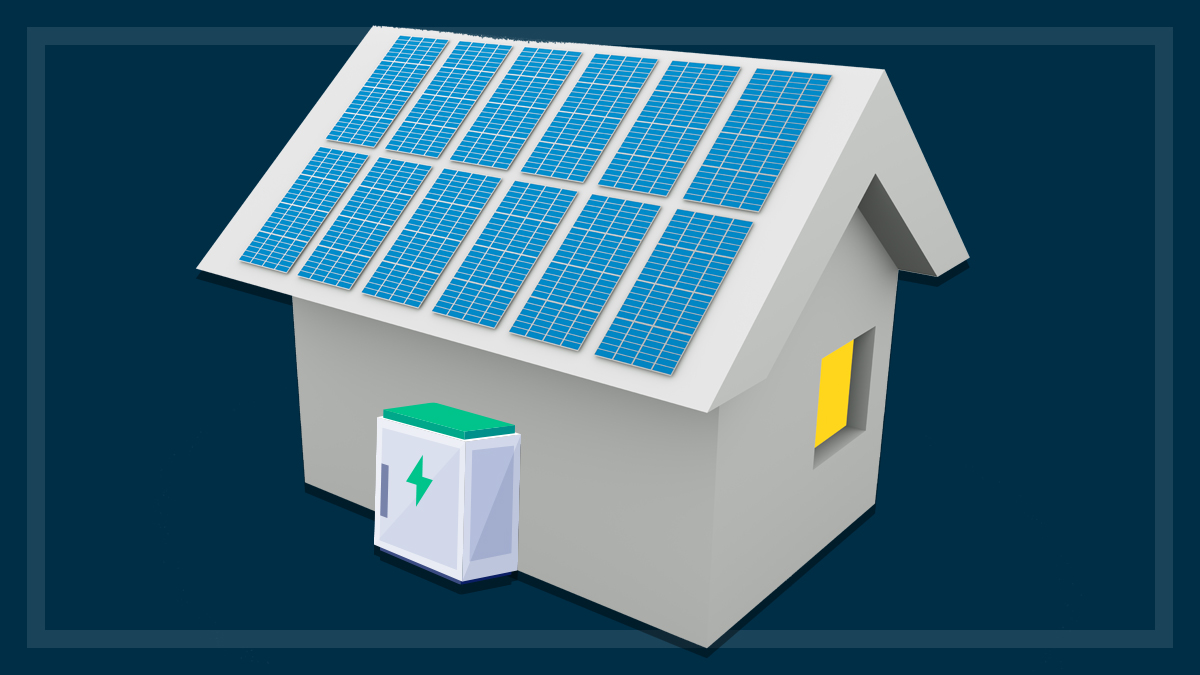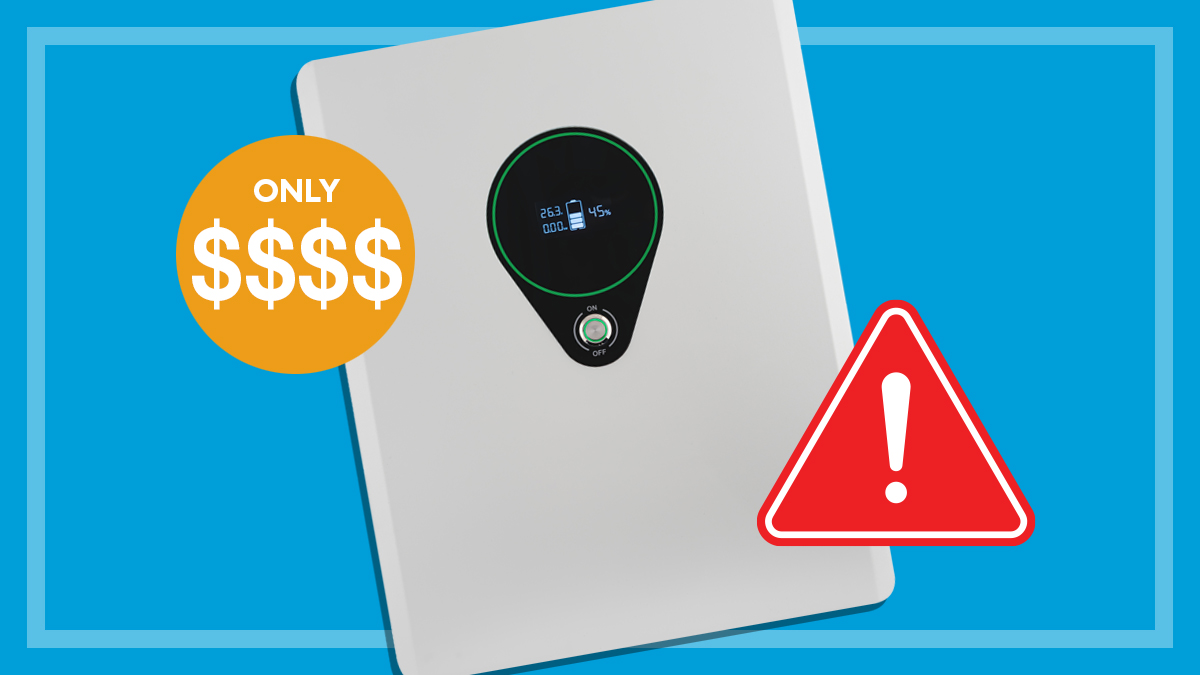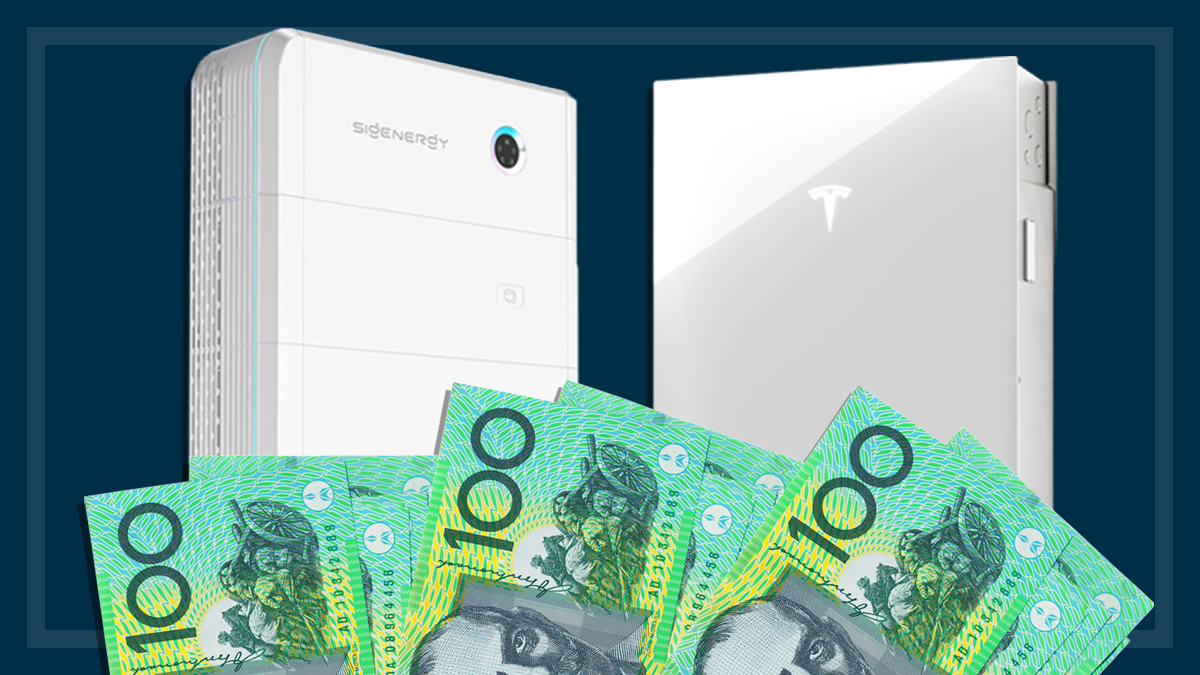Get our independent lab tests, expert reviews and honest advice.
Solar panel payback times
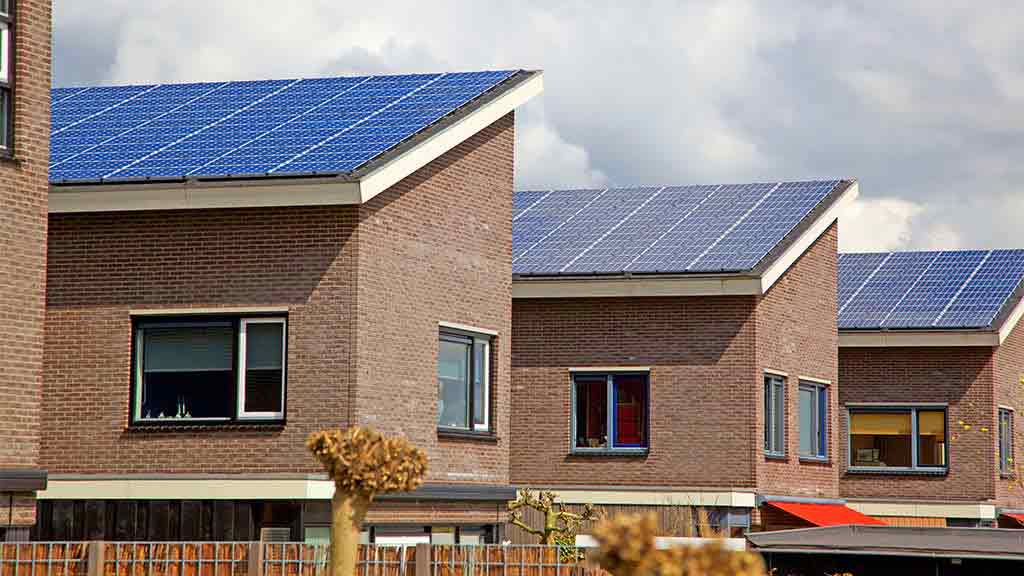
If you want to join the 20% of Australian households now generating electricity on their rooftops, we’ll show you how long a 5kW rooftop solar system could take to pay for itself through reduced power bills.
Calculating a payback period is complicated and looks at your electricity consumption patterns, location, energy tariffs and solar feed-in tariffs (FiTs), and the cost and quality of your system. Use our figures as a guide only.
What does a solar system cost?
Despite government rebates and incentives being wound back, the price of a 5kW solar system has fallen by around 58% in the last six years. Subsidies to stimulate the industry are no longer necessary and high energy prices make the case for investing in solar stronger.
These are the average, quoted, out-of-pocket costs for standard
installations (i.e. no special equipment or circumstances), including GST
and the federal STC (small-scale technology certificate) rebates.
Commercial solar brokering service Solar Choice puts the average price across Australian capital cities for a 5kW system at $5250. CHOICE tip:
A 5kW system is one of the most popular sizes at the moment and will
need about 25–35 m2 of sunny north or north-west facing roof area to
accommodate 15 to 20 panels.
Why we've partnered with SolarQuotes
We've partnered with SolarQuotes to help you find and buy the right solar, battery, heat pump and EV charger. While we make money if you use SolarQuotes to find an installer, this doesn't influence our ratings. 100% of the money we make goes directly back into our nonprofit mission.
Payback times for a 5kW system in each capital city
Accurately predicting the time it takes for an investment in solar PV to pay off isn’t straightforward, so we asked the independent Alternative Technology Association (ATA) to calculate approximate payback times for a 5kW solar system in each capital city.
They provided time frames for households with high daytime solar power usage (50% exports) and for those with low daytime usage (75% exports).
In most cases, the results will be similar for the rest of the state except where available sunshine differs.
Available sunshine hours make a big difference
Available sunshine hours affects the payback times in two ways. As Dean Lombard from the ATA explains:
The more sunshine, the more solar generation which offsets grid
electricity costs.
The higher the potential solar generation, the more STCs which
brings the upfront, out-of-pocket costs for the system down.
Snapshot of payback rate for a 5kW system across capital cities
The following statements relate to households that export 75% of their solar generation back to the grid, which is typical when people are not at home most days of the week.
Adelaide’s plentiful sunshine, low system prices, good FiT rates and very high electricity prices mean the payback period is short at around three years.
Perth’s low out-of-pocket system costs mean a relatively short payback period of about five years.
Brisbane and Sydney have similar payback periods of around five years.
Darwin’s high system costs (due to its remoteness) are offset by the very high FiT of approximately 26c per kWh giving it a mid-range payback period of approximately five to six years.
Canberra has low systems costs and low energy prices but also low FiTs. Its payback period is approximately six years.
Melbourne has a payback period of around six years. It has mid-range system prices and lower than average retail electricity prices, but fewer available sunshine hours.
Hobart has relatively high electricity rates but less available sunshine and thus lower generation and fewer rebates. This means it has the longest payback period of around seven years.
Figuring out your household payback times – it’s complicated!
If you’ve already looked at prices for solar PV systems, you may have noticed large variations between the advertised payback times for panels. Some are much shorter than others, but tend to ignore plenty of potential costs and changes. For example, no allowance may be made for the decline in the panels’ output over time.
Payback times will vary depending upon:
- available sunlight hours – this influences productivity of the
system and the amount of rebates - electricity prices combined with FiTs
- the cost and quality of the system
- how much solar power is self consumed (the more the better)
- positioning of the panels and issues with the site.
“Some in the PV industry are far too simplistic about these calculations – they’re being misleading,” says Damien Moyse, energy projects and policy manager for the Alternative Technology Association.
“They’re experts in solar energy, but not necessarily in the calculations around FiTs, self-consumption patterns, or the variable generation or export amounts at different times of year.”
CHOICE tip: Payback times will differ with each household and you should investigate with your own inputs.
The ATA has a free Solar and battery advice tool if you’re thinking about installing a solar system. You enter your household type and location, and choose a budget range. You’re then emailed a report showing the solar-only and solar plus battery systems in your budget. The report lets you compare cost, bill savings, environmental benefit, and payback period.
Financial incentives for solar owners
Previous government grant and rebate systems have been replaced by the small-scale technology certificate (STC) scheme and FiTs.
1. Small-scale technology certificates (STCs)
Under the Federal Government’s Small Scale Renewable Energy Scheme , eligible households receive money for small-scale technology certificates (STCs).
One certificate is equal to one megawatt hour of eligible renewable electricity generated by the solar PV system over a deeming period. You can claim the certificates your system can potentially earn over the next 13 years upfront. This period will decline by one year, each year, until the scheme ends in 2030.
You can calculate the number of certificates a system may be eligible for using the Small Generation Unit STC calculator . The price you get for each STC is likely be close to $36 as of June 2018.
2. Feed-in tariffs
This is the rate you’re paid for electricity that grid-connected panels contribute to the local network. All FiTs in Australia are net feed-in tariffs.
Feed-in tariffs pay for your surplus electricity fed into the grid. For example, if your system produced 3000 kWh of solar electricity, and you used 1000 kWh of that in your home while it was being generated (during the day), the net FiT is paid for the 2000 kWh difference that is sent to the grid.
Warning: Beware deceptively high FiTs. High FiT rates on your electricity deal mean more money for your exported solar but it doesn’t always equate to a good deal if the deal also has high electricity tariffs.
Want to get a faster payback time?
You can increase the savings from your solar system and lower the payback time by increasing the amount of solar power that you consume onsite and avoiding importing expensive electricity from the grid.
FiTs for the solar electricity you export are lower than the price per kWh we pay for electricity imported from the grid.
Time variant FiTs in VIC, QLD and NSW
The ATA used flat rate solar FiTs in the calculations however it’s worth highlighting that Queensland, Victoria and New South Wales are introducing time-variant FiTs (FiTs) where different prices are paid for exported solar at different times of the day.
Until now, only flat rate FiTs have been on offer in those states. Minimum prices are mandated in Victoria and Queensland, but only recommended in New South Wales.
Dean Lombard says estimating the payback period of a solar system with time-variant FiTs requires a more complex calculation based on the electricity deal and the tariffs, specific information about a household’s energy usage patterns and the design and orientation of their solar system.
The best time-variant solar FiTs so far is the one in Victoria, says Lombard.
“The standard time-variant FiT in Victoria will shorten payback times compared to the standard single-rate FiT because even its shoulder price (10.3c per kWh) is higher than the flat tariff (9.9c per kWh), and its peak price is really high (29c per kWh).”
But in Queensland and New South Wales, Lombard says time variant tariffs may not be beneficial. It depends on orientation and time of consumption because the differential between time periods is smaller and time-variant rates are lower than the flat rate FiT.
ATA’s modelling shows that in Queensland, typical households would need almost half of their grid feed-in to occur during the peak period of 3-7pm to benefit.
New South Wales’ new recommended time-variant FiT is complex and the ATA advises it can’t predict its impact on payback time without detailed, household specific modelling.
Assumptions: how the ATA calculates
The calculations assume a system size of 5 kW.
System costs are fully installed out of pocket costs using average
prices for each capital city (source:
Residential Solar PV Price Index
).
Retail energy product used is AGL Savers market offer for all
cities except Hobart, Perth, Darwin which have no retail choice. It
includes a pay-on-time discount but no other discounts. (See table
below.)
FiT rate is based on regulated rates or that applicable to the
relevant retail offer. It aligns with typical mid level FiT rates
in states with a range of FiT rates. (See table below.) They do not
account for time-variant FiTs.
The electricity export rates assume households export either 50% or
75% of the electricity they produce, with 50% export plausible for
households with considerable daytime energy usage (e.g. where
people are generally home or appliances are set to operate during
the day) and 75% exports typical for households with low daytime
energy usage.
Annual generation for each location is calculated considering
available sunlight for each area, as well as panel degradation and
generation losses.
The annual increase in retail electricity price and FiT rate is
assumed to be 2.5%.
The opportunity cost of money that could have been invested instead
is 2.5%.
The payback times are approximate for typical households in capital
cities. Individual payback times will vary depending on household
energy usage patterns, energy prices or difficult installations and
available sunshine hours. Allowances should be made for the
differing decline in panels’ output over time and non-optimal
placement and angle.
| City | Electricity price | FiT |
|---|---|---|
|
Adelaide |
37c/kWh |
16c/kWh |
|
Brisbane |
21c/kWh |
11c/kWh |
|
Canberra |
19c/kWh |
8c/kWh |
|
Darwin |
26c/kWh |
26c/kWh |
|
Hobart |
26c/kWh |
9c/kWh |
|
Melbourne |
21c/kWh |
11c/kWh |
|
Perth |
26c/kWh |
7c/kWh |
|
Sydney |
24c/kWh |
11c/kWh |
FAQs
Dean Lombard, Senior Energy Analyst from the ATA answers some frequently asked questions.
Payback calculation is complex, with 15 or more variables and a number of assumptions which may be different to your system and usage.
The most accurate calculations on what you will save on energy bills rely on: your energy consumption data for the past 12 months; your seasonal consumption during solar generation times; and generation data for different-sized solar systems in your location.
This is a complex series of calculations. It’s what the ATA does in its paid energy advice service. You can also get an approximate calculation from the ATA’s free online basic solar advice calculator.
Suppliers should give you a range for the amount your electricity bill will go down, but may have disclaimers on their websites or in their terms and conditions saying you need to get specific financial advice for how it will affect your property, and that these are just generic estimates.
Yes. We used to recommend that systems be carefully sized to maximise self-consumption and minimise exports to the grid.
But the price of solar systems has come down so much in the last few years – especially larger systems – and feed-in-tariffs have also come up a bit. Now, in almost every situation we’ve encountered, oversized systems reach economic payback as fast as or even faster than right-sized smaller systems. This means that the best economic result usually comes from the biggest system you can afford and fit on your roof, regardless of your usage. Even on unoccupied buildings, solar systems generally pay themselves off through feed-in-tariffs well before the end of their life.
Yes. Solar generation you export to the grid is used by your neighbours, substituting for electricity that would otherwise be generated from other sources – usually coal or gas. This is another benefit of oversizing a solar system: all that extra generation being exported to the grid increases the proportion of emissions-free renewable energy in the mix.
There is an environmental cost to manufacturing the solar cells themselves, but this is quite small compared to the capacity and lifespan of modern solar cells, and is offset by the system’s generation within the first year or two.
A brand will have models that are good and others that aren’t. You can tell a decent piece of equipment by the warranty a manufacturer is willing to offer. Panels are really quite simple technology, so you should get a 25-year warranty with 80% level of output in the 25th year. The inverters are more critical: if you have a poor inverter you may have losses through the system, and you don’t want to replace your inverter early. A 10-year warranty for an inverter should ensure you’ll get a decent-quality system.
A few years ago it seemed that solar system prices had come down as far as they could but then they kept getting cheaper. The rate of price change has slowed down but all indications are that prices should continue to fall.


